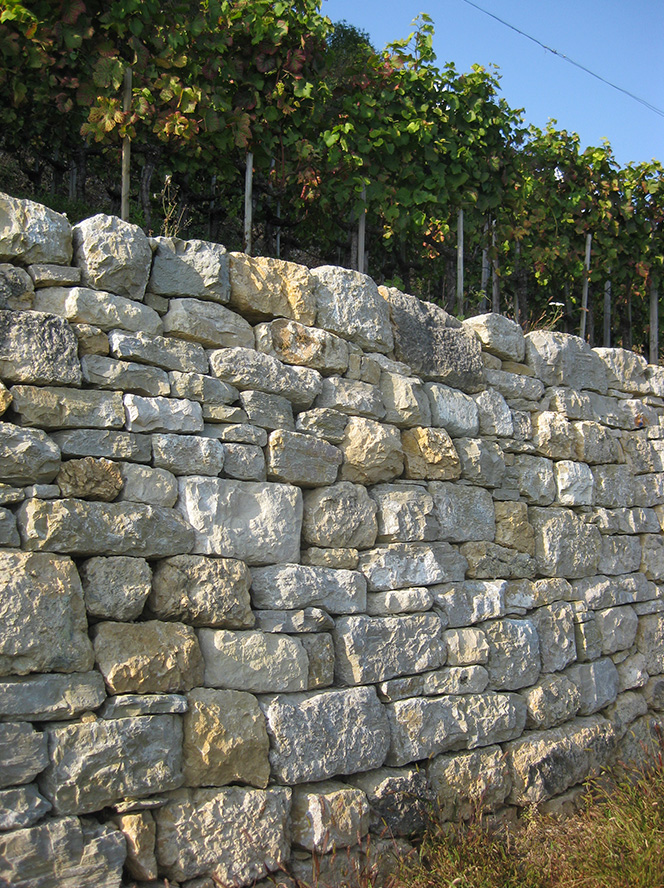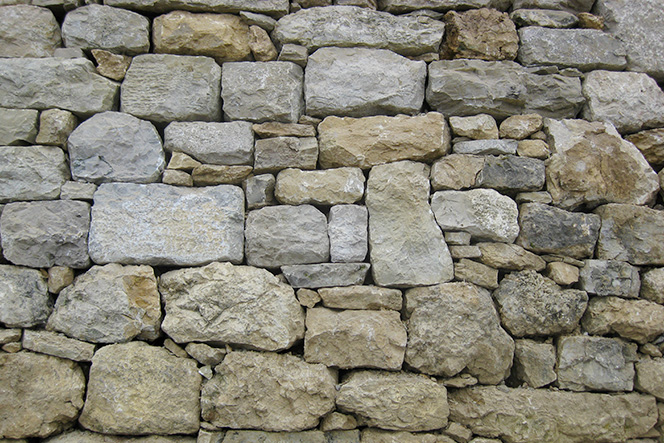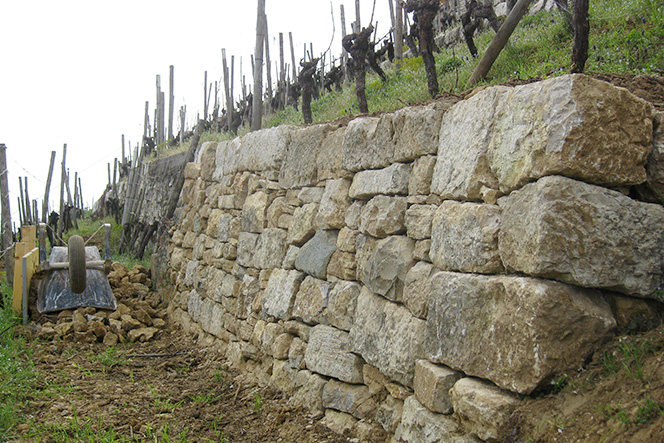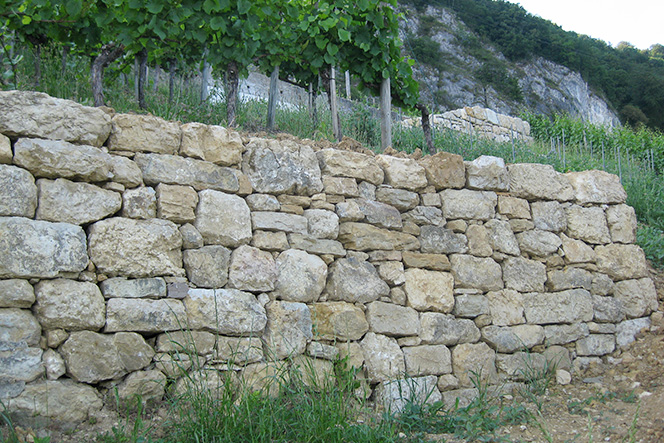
Reconstruction of terrace walls of the Douanne vineyard
Douanne
Since 2013, Stoneworks Lippert has been working on a major project in the Douane region on the shores of Lake Bienne. Our company is reconstructing about 180 deteriorated segments of the supporting walls for the terraced vineyards, respecting the tradition of dry stone construction. The restoration respects the local architectural history, the landscape and the use of regional raw materials: these are the values that matter to us most. The aim of each of our projects is the long-term preservation of the existing works using the simplest and most effective means.
The Douanne project is part of a large property improvement programme on the left bank of Lake Bienne. Mandated by the wine-producers’ cooperative from the communes of Douanne, Gléresse and Daucher-Alfermée, Stoneworks Lippert is the only company to carry out this kind of work in this Bern commune. The work will be completed in autumn 2015.
The reconstruction project for the deteriorated walls includes 65 plots over about twenty properties. The 178 segments being restored represent about 575 m2 of natural stone walls with the size of each reconstruction varying between 1 and 20 m2.
the project
-

Technique and Know-How
Since its creation in 2004, Stoneworks Lippert has specialised in dry stone masonry. In recent years, we have acquired vast expertise in the field of fast reconstruction of locally unstable or deteriorated masonry without having to reconstruct the walls in their entirety.
The Douane project includes the reconstruction of masonry elements in the footings of the foundations or within the existing works, clean-up and consolidation of the wall segments. It represents a new opportunity to share our know-how and technical knowledge with communities.
Specific Project Work:
- Total reconstruction of collapsed walls
- Clean-up of masonry elements within the existing work
- Reconstruction of the foundation footings
-

Constraints
Over the years, each vineyard owner has restored their walls using different techniques. While some replaced whole segments with reinforced concrete, others consolidated or coated the defective parts with mortar. Our goal today is to deal with these constraints and reconstruct the wall segments in question based on the art of building using dry stone only.
Working in the heart of the vines on steeply sloped terrain is another challenge of this project. We also pay close attention to preserving the vines and their maturing grapes. As such, we take care when delivering additional material to site and when deconstructing the walls to avoid damaging the grape vines.
Dry stone masonry has a tradition of using materials found in the immediate vicinity of the works. As such, to meet our needs for the necessary stone for restoring, based on current quality criteria, we only work with local, or when necessary regional, stone. This allows us to obtain a look similar to that of the existing walls.
-

Emphasising Dry Stone
Today, these walls, constructed long ago with stones from a landslide caused by the Basel earthquake of 1356, are part of a branch of the Camino de Santiago, offering splendid panoramic views of the lake, the plateau and the Alps.
The wine route also winds along the slope between Bienne and Douane and gives hikers and walkers the chance to discover the art of dry stone constructions.
This art of building is part of the national inventory of living traditions and is as such is highlighted as part of the national landscape listed as a UNESCO World Heritage Site.